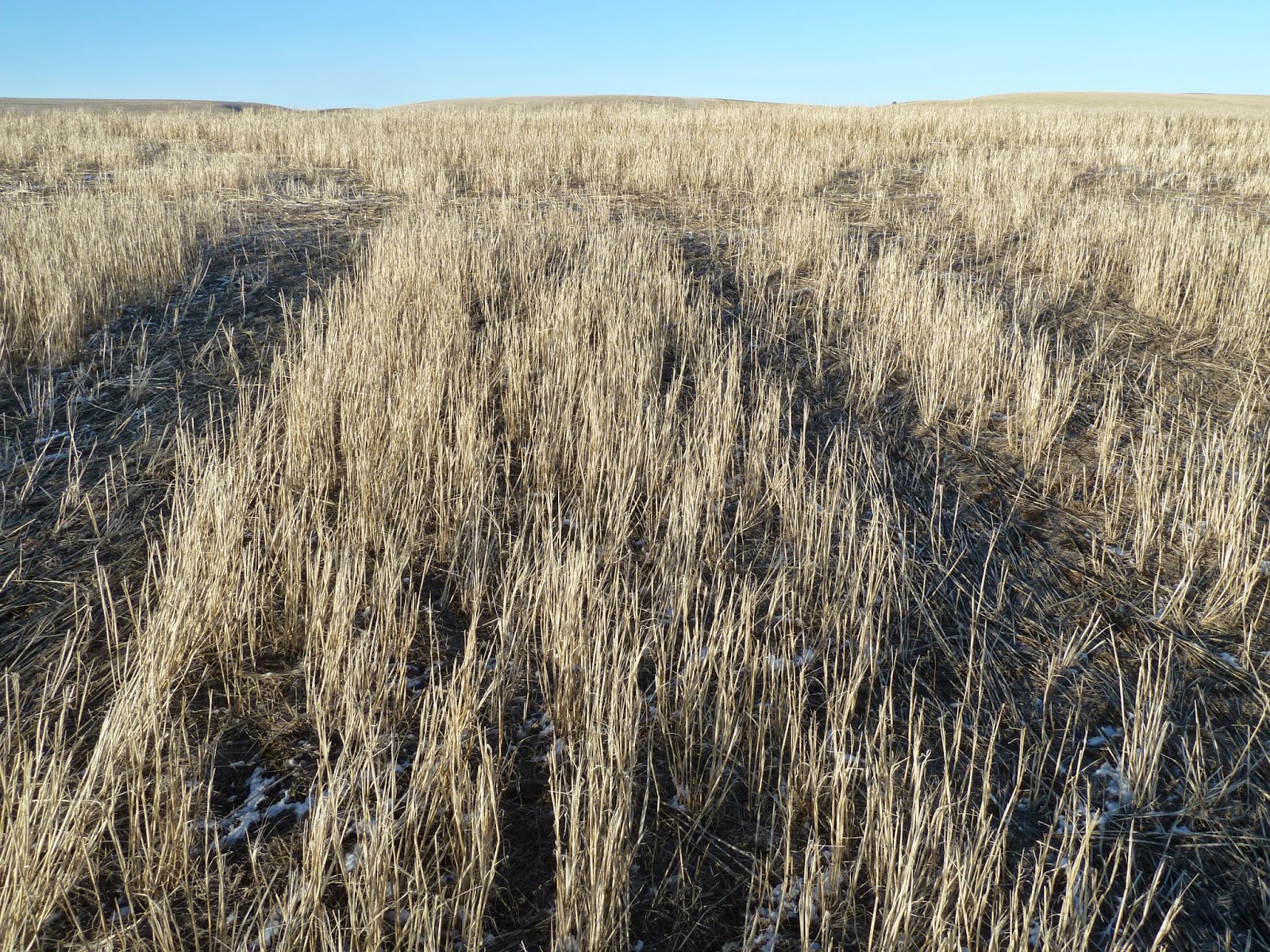---------
[DETAIL]-- Since the middle of November we have had below normal temperatures and occasionally a lot of wind. Recently we have received a little snow (≈1-2"). Today, as well as last February I have observed, while walking the fields, that snow has melted away from the stems of the tall stubble where the short stem stubble and the flattened residue is maintaining the snow.
The pic above is from last February. This is a thaw event and water is moving slowly along the ground surface. Notice that the snow is shrinking away from the base of the tall (≈36-40") winter wheat stubble more quickly than from the 10" row middles. Most of the ground surface has a solid mat of residue.
This shows the snow having been swept off the winter wheat crop and redeposited in the tall grass of the CRP strip. Our crop is obviously not able to utilize the moisture contained in this snow bank.
The pic above is part of the thaw event of 2/14. This shows snow relocated following a wind event leaving drifts. In this case the drift is melting, adding to the fast moving water in the shallow valley. Even though we have good armor on the field this is causing a rill to develop. Our crop is also being denied moisture through redeposition and runoff. Having standing stubble would have helped I'm sure.
The pic above was taken 12/3/14. It shows a thin layer of snow (≈1") where there is short stubble in the fore ground and the far background. The middle area has stripper headed spring barley stubble (≈18"tall). There is little or no snow left on the ground surface under the taller stubble.
The pic shows a sample of the middle area in the pic above of the stripper headed barley. There is very little snow left on the ground surface compared to an area a few feet to the left that had the stubble cut at near ground level. Is this good or bad? Is the tall stubble moderating the soil temperature? Even the blackened (cultivated) fields show more snow retention than the pic above. I would say that the ground surface shown is warmer than those surfaces of the short stubble, flat residue, or no residue covered fields. Within this post you can find a contradiction and I can't explain why with more than a guess.





Tracy,
ReplyDeleteI think it would be interesting to take a soil test for moisture. Maybe the areas with taller stubble, even though the snow left quicker, it may have retained more of the moisture. Not sure, just would be interesting to find out.
Art Schultheis
Art,
ReplyDeleteI hope to do that next spring. I struggle with getting something that is meaningful for comparison with the variability of soils & terrain. I am confident that more moisture is retained. My observations are supporting what I am reading about tall stubble -- moderating the micro-climate.